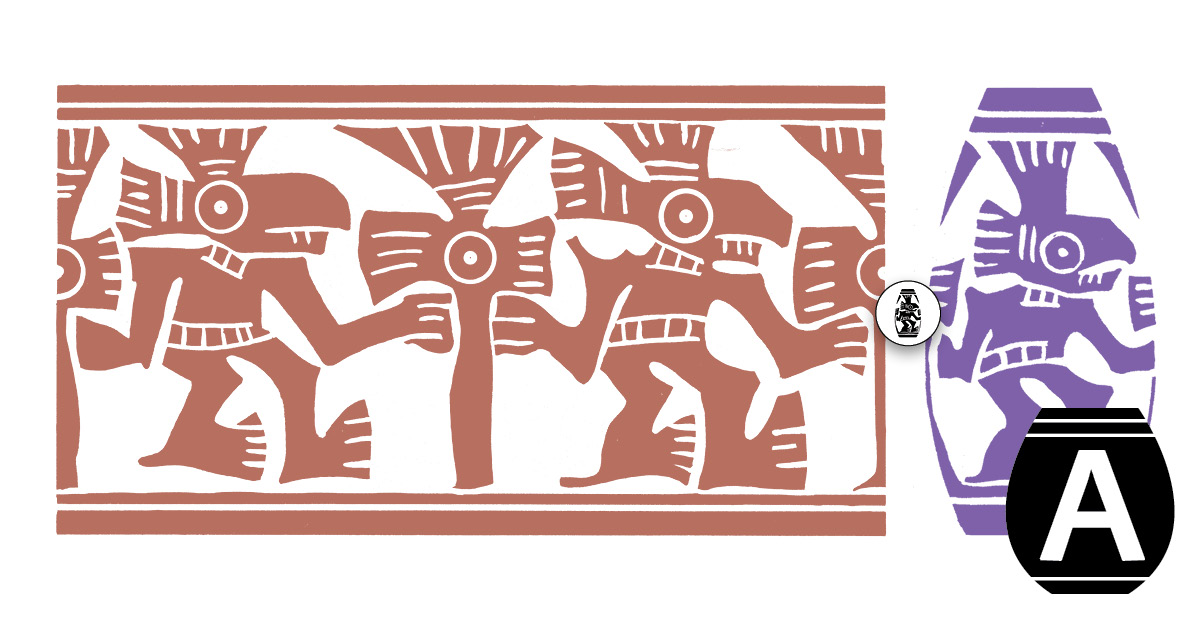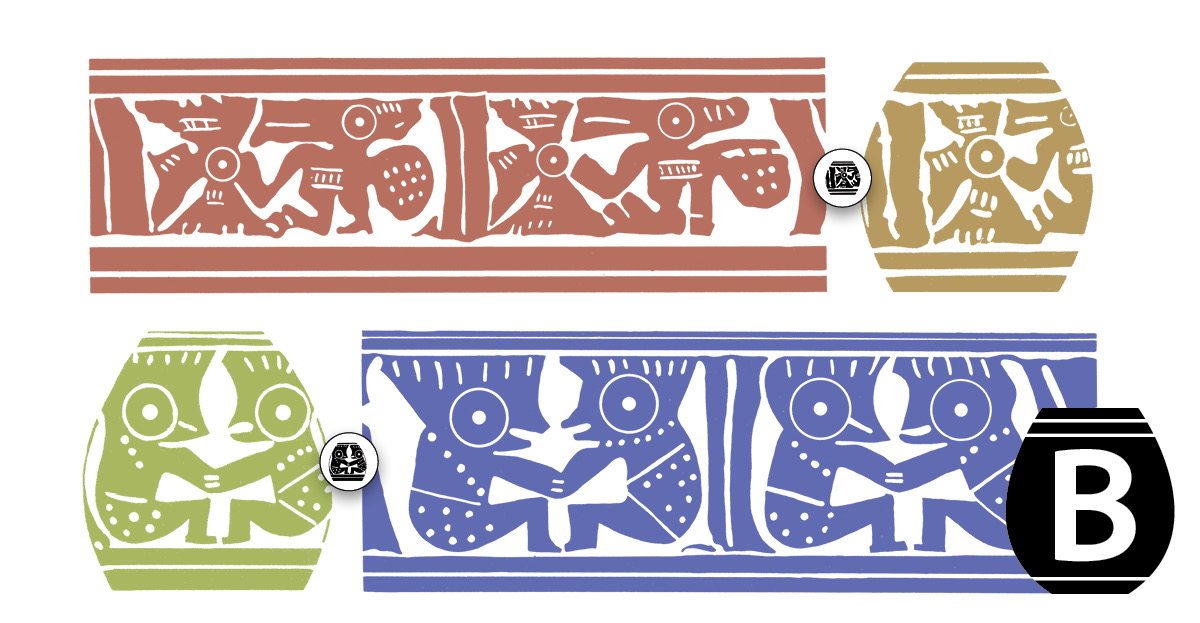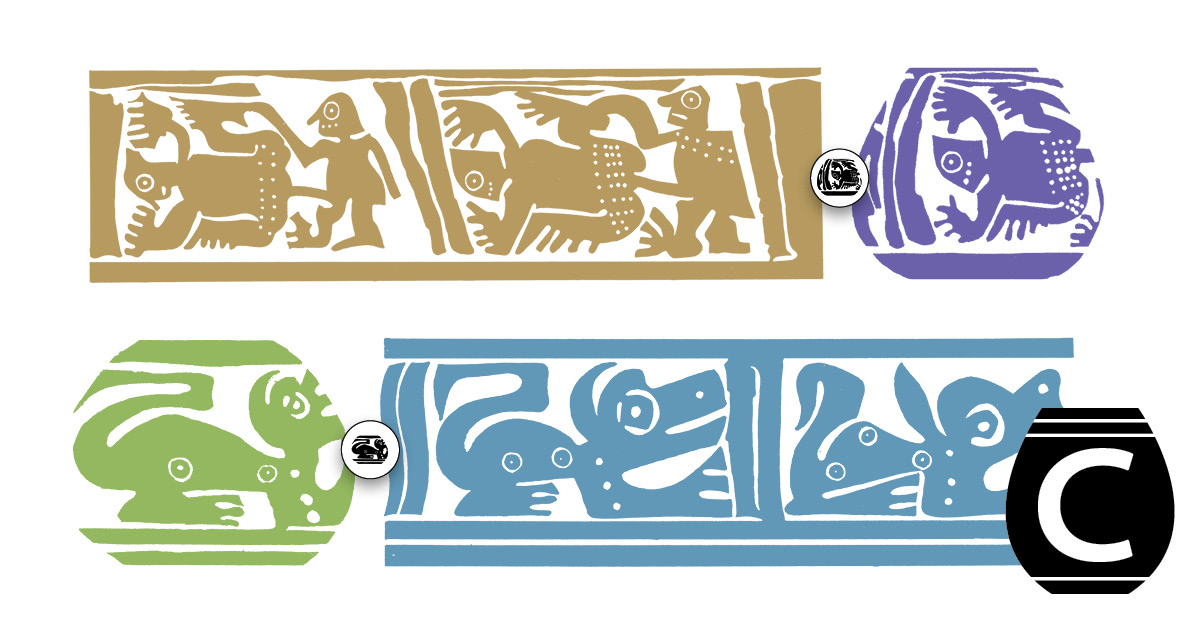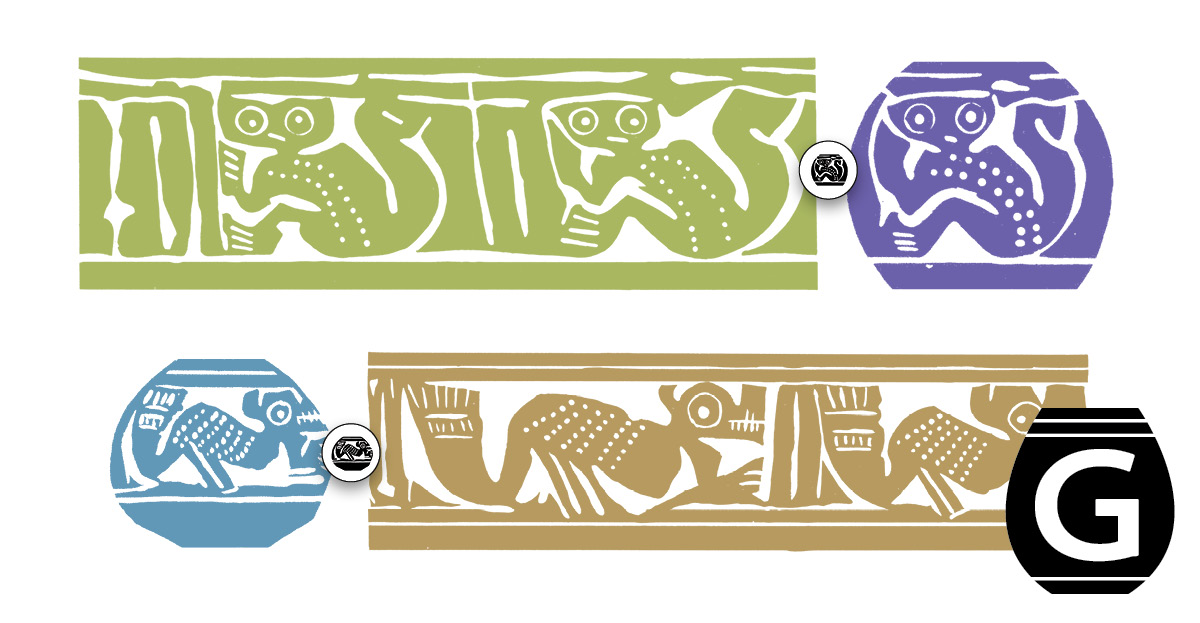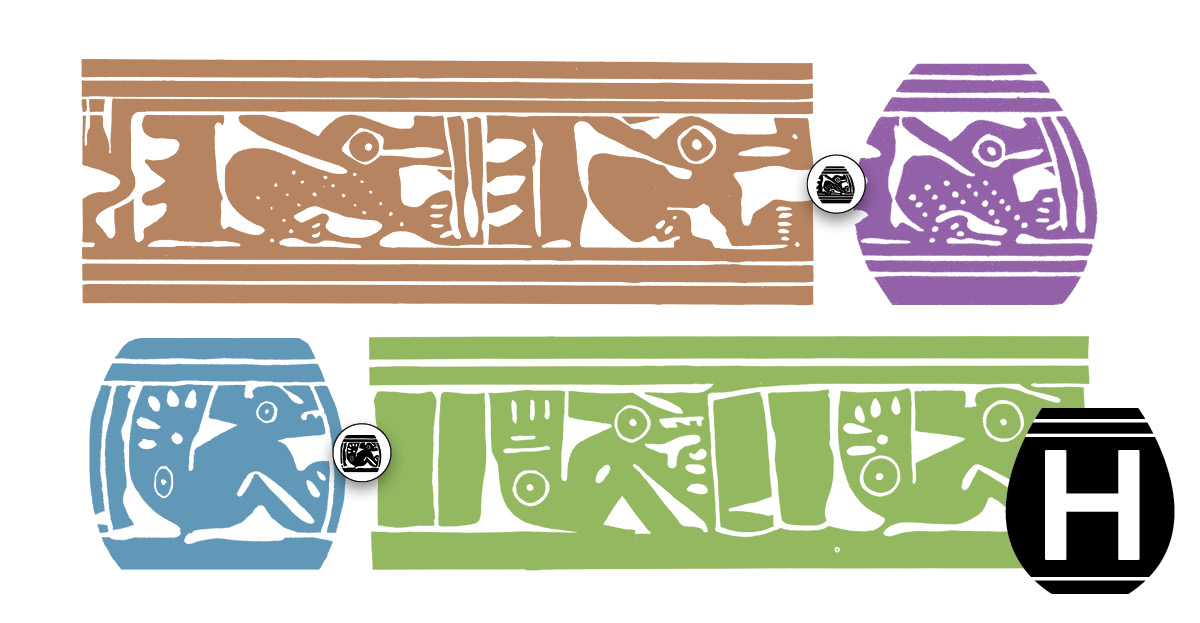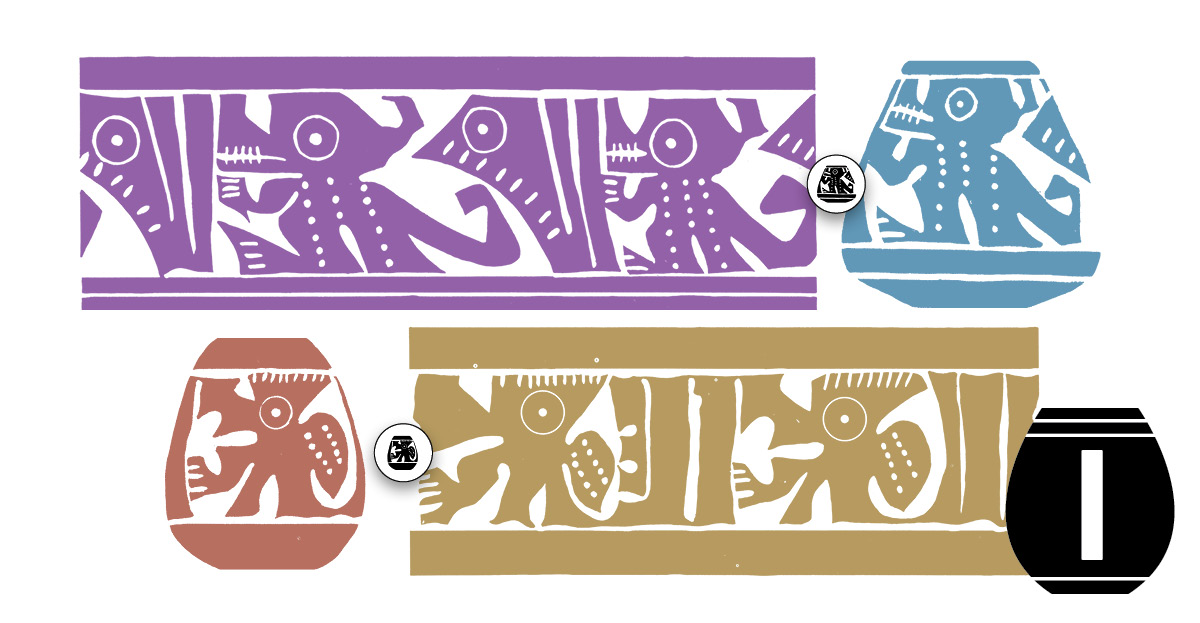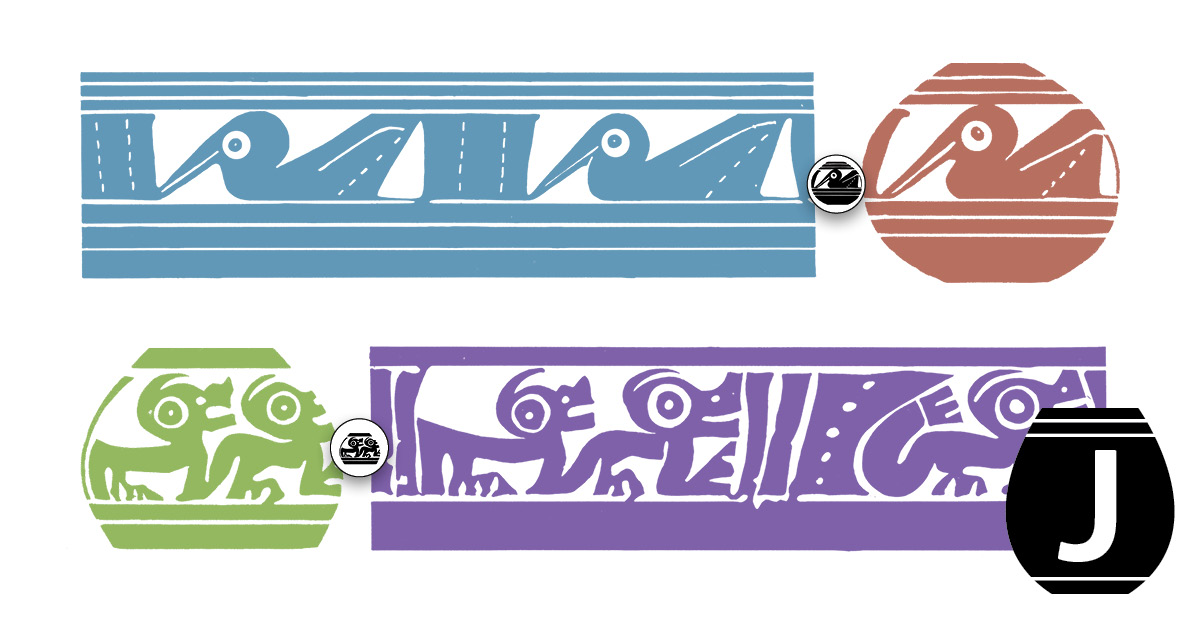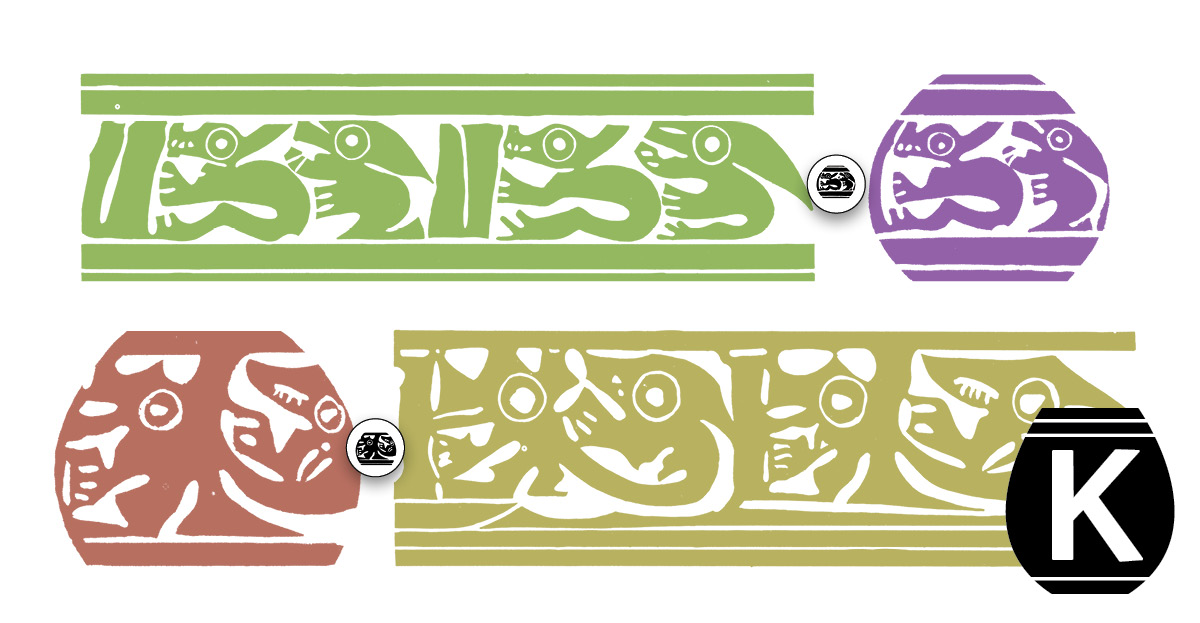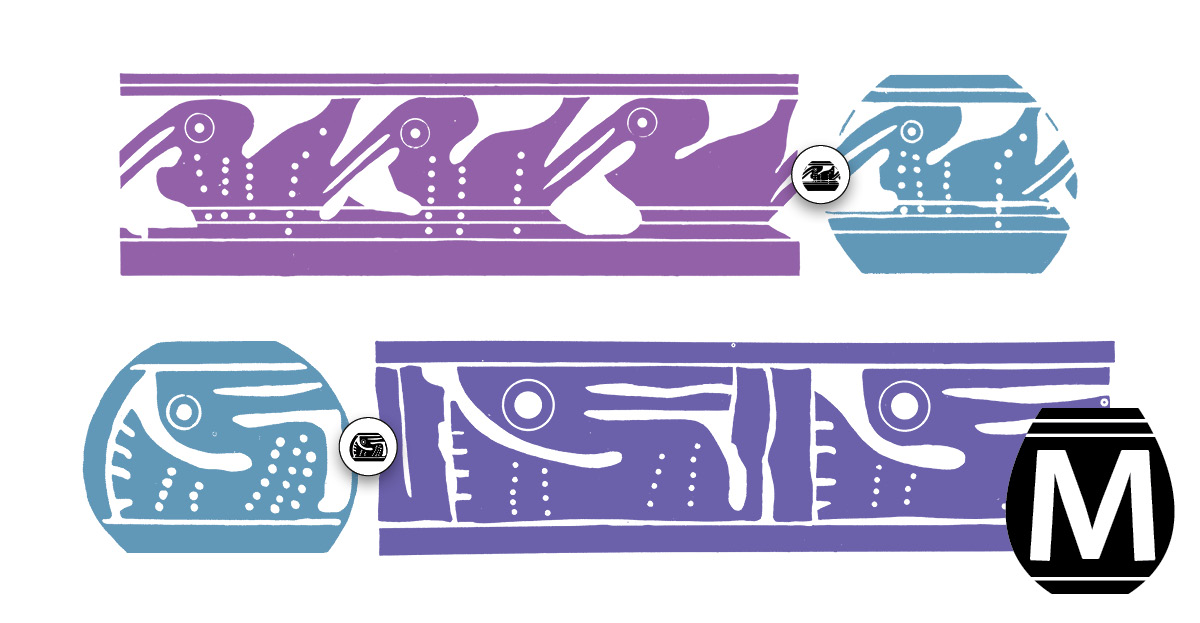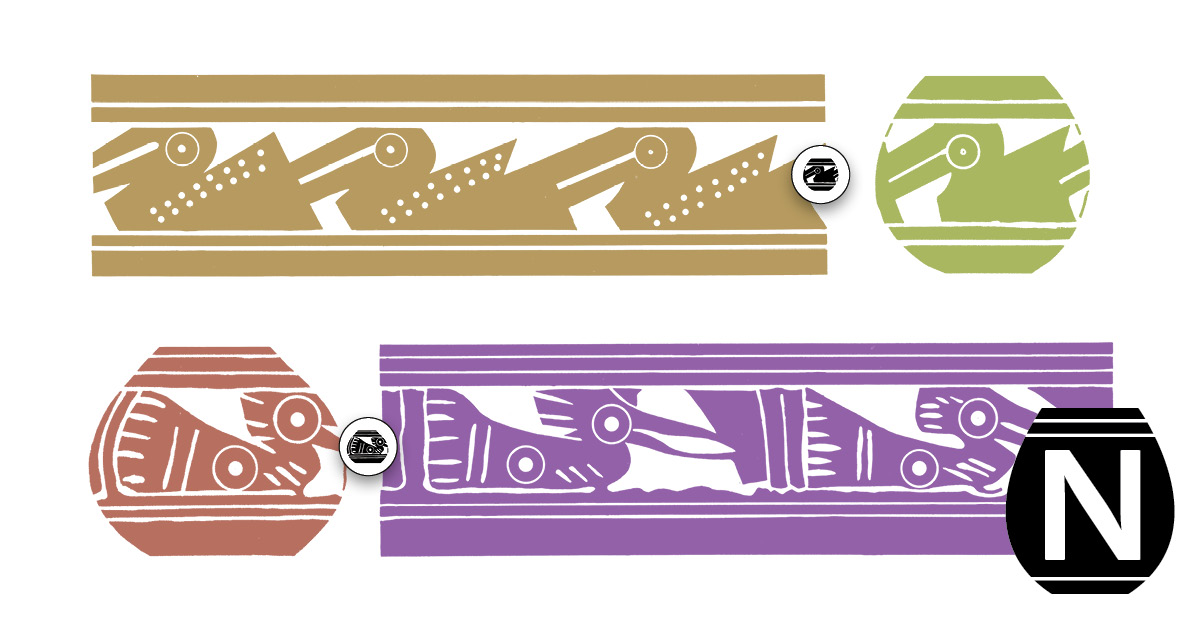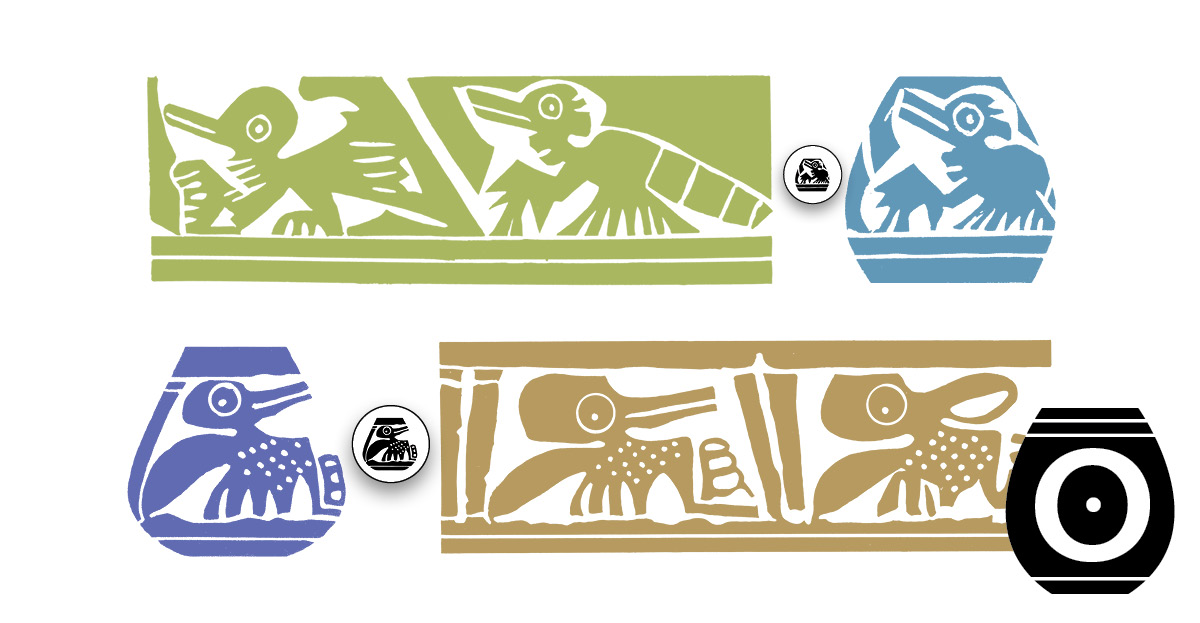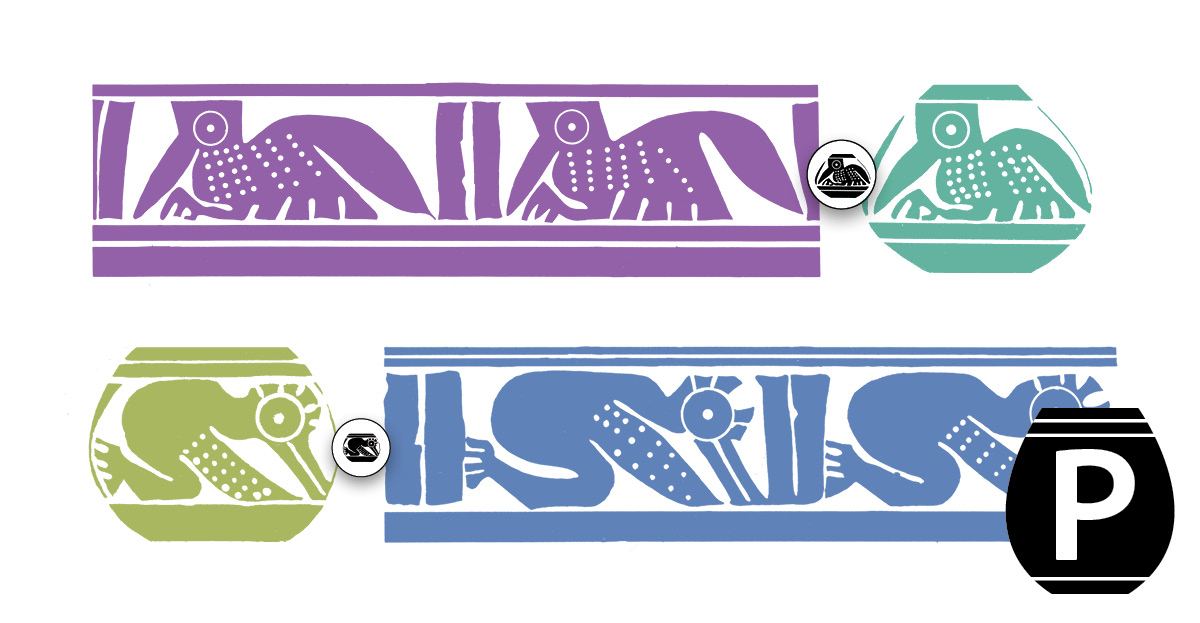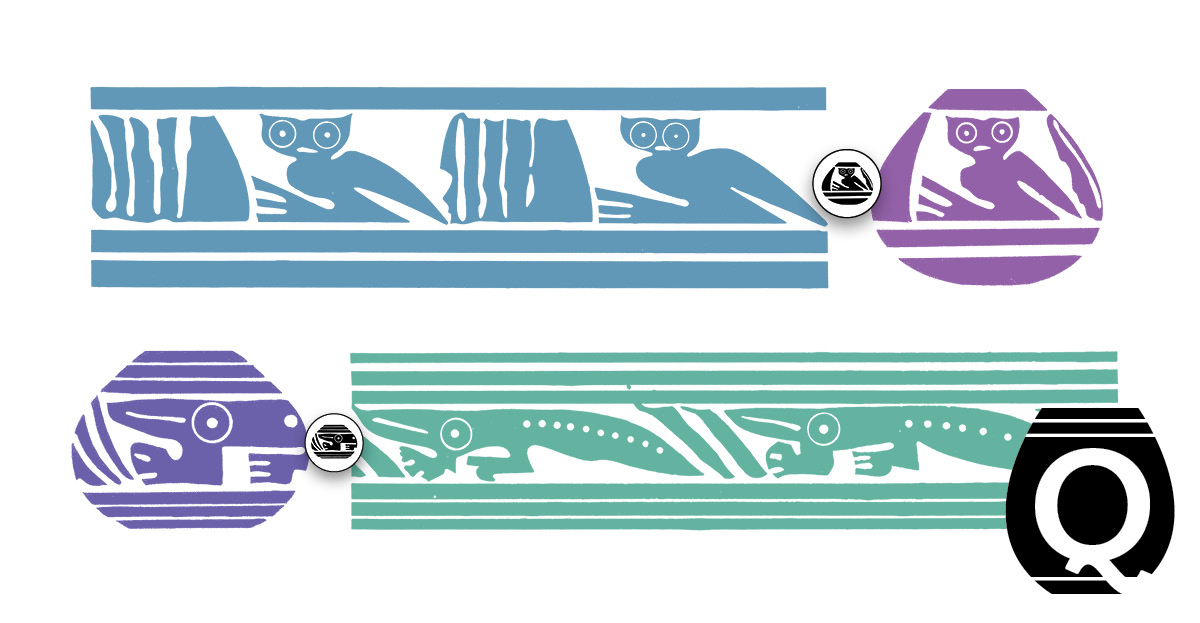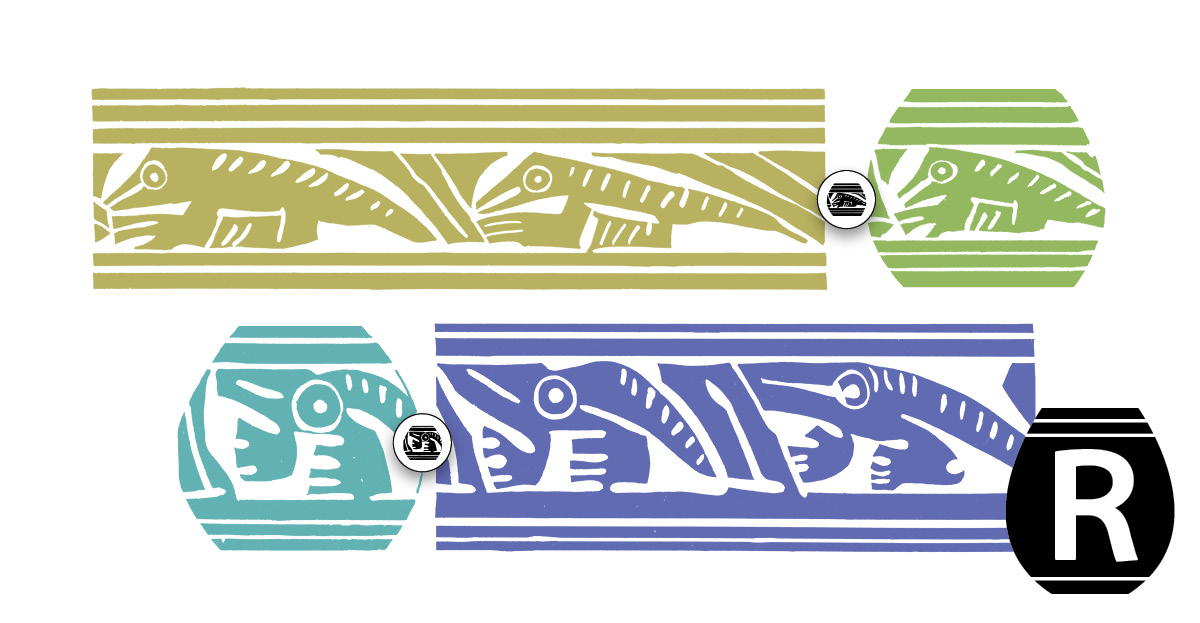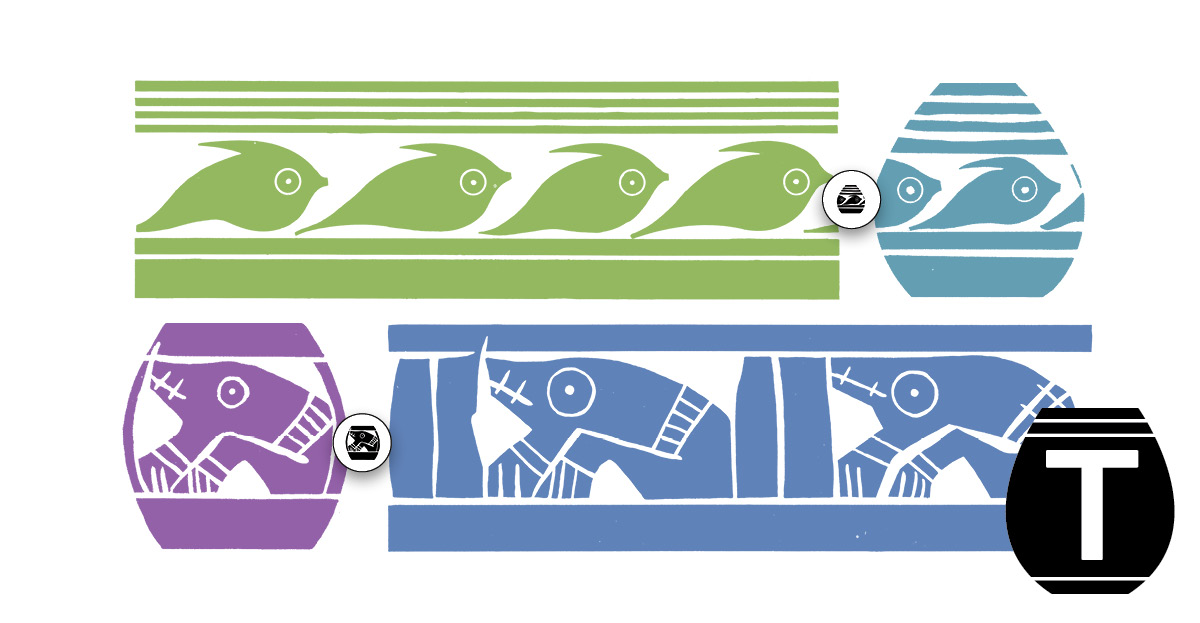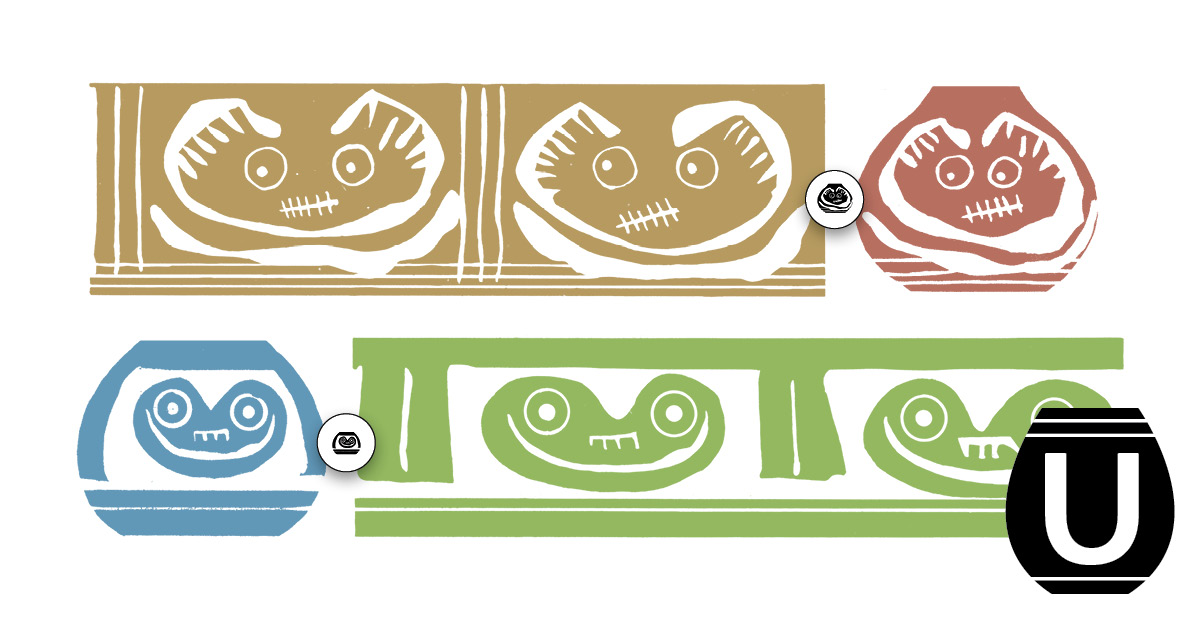Artwork from Ancient Ecuador Group E
GBD MICROSITE: INDIGENOUS ![]() ARTWORK FROM ANCIENT ECUADOR
ARTWORK FROM ANCIENT ECUADOR
Artwork from Ancient Ecuador–Group E
Top: Kinkajou. Bottom: Unidentified Mammal.
*A Brief History of Ecuador is from Anywhere Ecuador. The Images: All images and descriptions are taken from the book “Indian Designs from Ancient Ecuador” by Frederick W. Shafer. Learn more about the book here. Artwork Colors: The artwork has been colorized by Granite Bay Design from the original black and white versions. What the Artwork Shows: The wide bands above show the bead artwork flattened out. Next to that is what the bead looks like with the pattern applied. Finally, there is a small circle containing a black and white version of the bead at actual size. About the Author: The author of the book, Frederick W. Shaffer, took great care in reproducing the artwork as it was originally rendered. Learn more about that here.


